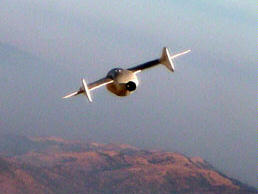We are developing the social individualist meta-context for the future. From the very serious to the extremely frivolous... lets see what is on the mind of the Samizdata people.
Samizdata, derived from Samizdat /n. - a system of clandestine publication of banned literature in the USSR [Russ.,= self-publishing house]
|
There are reports China may launch its’ first manned spacecraft by as early as October 15th.
I fully expect the general media will not consider it a major story. They will be wrong. China is not going to park in Earth orbit for three decades like we have. Western complacency is up for a serious butt-kick. China is going to aim for the moon as soon as they can concievably do so.
Before you complain about how far behind their technology is, please note it is not technology that has kept us from colonizing the solar system the last thirty years. It is the iron triangle which has kept us here: NASA, Big Aerospace and Congress. Congress primarily looks on space as pork for the re-election. Big Aerospace sees it as a feeding trough. NASA chiefs see it as a means of turf expansion.
The whole system is bloated and risk averse. Getting people into space is a side issue from what really matters. Congress runs taxpayer funds through as many districts as possible. The government contractors want the most profit for the least possible amount of deliverables. NASA top management wants to minimize the risk of adverse media attention to their careers.
The end result is… three decades of next to nothing for our money but paper spaceships and imaginary engines.
Don’t tell me that NASA isn’t risk averse just because the bureaucracy missed a problem and lost a shuttle. We’ve lost fourteen men and women in spaceflight and three more on the pad in four decades of manned spaceflight. More aviators than that died in almost every single year at the dawn of flight whose centenary is but three months away. Individuals can accept risk and push boundaries forward rapidly; democratic governments cannot.
This is why the answer to the Chinese is not NASA and the Ministries of Aircraft Production (ie Lockmart and Boeing); it’s XCOR, Armadillo Aerospace, Scaled Composites, Bigelow Aerospace, TransOrbital and the rest of the small and the innovative. The ones who are ready to put their own lives and fortunes on the line.
As Ben Bova said many years ago: “The Meek shall inherit the Earth. The rest of us will have left for the stars.”
I’ve not been writing about XCOR lately as there has not been much I feel at liberty to write about. There has not been a press release from them since July. So… I rang the CEO, an old friend from sci.space days. I caught him in DC where he is no doubt carrying out obeisance and sacrificing a fatted calf or his first born to the God of Paperwork.
Mojave has submitted its application to be a launch site.
XCOR has submitted its launch license paperwork.
I would say both are fairly good news. It certainly makes for convenience if the Mojave Civilian Flight Test Center adds spaceship testing to its’ approvals. Both Scaled Composites and XCOR are based there.
On September 4th, Scaled Composites executed a full scale ground test of the SpaceShipOne hybrid rocket engine. If all goes well, this engine will power the small ship on the first non-State manned suborbital flight.
The engine was run for the same amount of time and at the same thrust levels as a real flight. Due to proprietary concerns there are no technical details available on the test. Most of the publicly available details are summarized in this article by Leonard David.
Hybrid engines have a solid fuel that is quite similar to the material in truck tires. They are throttleable over a wide range (although Rutan appears to not be utilizing this ability) because they use a liquid oxidizer, typically liquid Oxygen (N2O2 or laughing gas in the case of SpaceShipOne). The engines are inherently safe.
Hybrid rocket engines were pioneered by the long departed California based companies Starstruck and AMROC, run by the late George Koopman and our good friend Jim Bennett. SpaceDev, one of the SpaceShipOne engine developers, bought the patent rights when AMROC went out of business.
Edward Teller, one of the great intellects of the twentieth century, died on Tuesday at age 95. Fox News has an obituary. It’s not bad although the reporter obviously has a rather negative attitude about Dr. Teller. These lines are some of the best of the article:
In an interview in 2001, Teller showed his old fighting spirit, delivering the two-word endorsement — “High time!” — to President George W. Bush’s decision to pull out of the 1972 Anti-Ballistic Missile treaty with Russia to work on a missile defense shield.
“So many times I have been asked whether I regret having worked on the atomic and hydrogen bombs,” he wrote in his autobiography, “Memoirs: A Twentieth-Century Journey in Science and Politics.” “My answer is no. I deeply regret the deaths and injuries that resulted from the atomic bombings, but my best explanation of why I do not regret working on weapons is a question: What if we hadn’t?”
I was my good fortune to attend a lecture by the good doctor some years ago. Teller was an idea factory through his entire life and was a rivetting speaker. I never knew the man personally, but I know people who worked with him in the national labs. He was a forceful leader and did not like obstacles or excuses. The future was there to reach for and he was fully prepared to reach as far as possible.
We owe him a debt of gratitude.
As expected, the refined orbital parameters of 2003QQ47 show no chance of impact with Earth.
Y’all can come out of your Asteroid Cellars now.
Back in May of this year, the Mars Global Surveyer was commanded to turn its’ camera outwards at the solar system. These marvelous images show us the home system as not-so-far-future Martian colonists will see it.
I was particularly captivated by this view of North and South America as it would appear to an amateur astronomer.

Photo: NASA/JPL/Malin Space Science Systems
Scaled Composities carried out a second drop test of its’ X-ship, the SpaceShipOne, last week. On this flight pilot Melville extended the flight envelope with aileron and rudder control tests at stall. The objectives of the flight were, according to the test report:
Same objectives as the aborted flight 31LC/04GC earlier today. Second glide flight of SpaceShipOne. Flying qualities and performance in the space ship re-entry or “feather” mode. Pilot workload and situational awareness while transitioning and handling qualities assessment when reconfigured. As a glider, stall investigation both at high and low altitude and envelope expansion out to 200 kts and 4 G’s. More aggressive, lateral directional characteristics including adverse yaw, roll rate effectiveness and control, including 360 degree aileron roll, and full rudder side slips.
Each test brings us one step closer to commercial space. If Scaled Composites’ red tape clearance efforts are going equally well we may yet see the first private suborbital space flight during the December centenary of the Wright brothers first flight at Kittyhawk.
You may have heard the news reports. This newly discovered asteroid could potentially ruin everyone’s day on March 21st, 2014. It is way too soon to take this seriously and the odds of an impact event are a little under a million to one. It will take astronomers some time to refine the orbit. It is likely, but not certain, such refinements will prove it harmless.
You can view the current data on this rock at JPL.
If by outrageous bad fortune this one has our name on it we’ll spend a good part of the Global Economic Product over the next 11 years to get out there and sort the matter. This is not exactly the way I want us to bootstrap ourselves off the planet, but it is certainly better than the alternative…
I’ll post on it again if it gets interesting.
I posted information about the first drop test of Scaled Composite’s X-ship a few weeks ago. Here’s a photo of the spaceship on approach to the Mojave airport during that test.
 Photo: courtesy Scaled Composites
Photo: courtesy Scaled Composites
The Armadillo Aerospace X-Ship is coming together nicely according to their latest report:
All engine plumbing and wiring is complete on the big vehicle. We loaded water into the big tank and tested all the valves, with pretty good results. Our distribution manifold has a leak in the weld which will need to be fixed, and the fill port 2″ threads were loosened during the filling process when the giant hose pressurized itself and whipped around a bit. We can’t just weld the inlet fittings, because the check valve is stainless steel, while the rest of the hardware is aluminum, so we may need to weld flanges onto each side and bolt them together.
They seem confident they are close to completion:
If there was catalyst in the engines, the big vehicle is now capable of flight, but we still need to get the drogue cannon worked out before it can land properly. We also need to make some honeycomb panels to protect the base of the tank from exhaust at launch, but we are running out of things to do on it. The base will need a fair amount of rework when we put the full size engines on it, but the basic layout will probably remain the same.
I look forward to news of their first static test of the big vehicle.
If you are interested in space history, have I got the link for you.
This is the now declassified National Intelligence Briefing given to President Lyndon Baines Johnson in January 1967 on the topic of the soviet lunar program.
Enjoy!
Is this beautiful or what?
(Labelled version here. Descriptions of how the Hubble Space Telescope took the photo here).
(Link via slashdot).
Update:
This infrared image taken by the UK Infrared Telescope in Hawaii is claimed to be one of the sharpest ground-based photos of Mars ever taken. (Descriptions here and labelled version here).
Sadly, I think that the position of Samizdata’s representative in the first hundred may already be filled.
Further Update:
Having just adopted the advanced astronomical technique of opening my window and looking in a vaguely easterly direction, I have to agree with Dale that Mars is extraordinarily bright, particularly given that it is only about 30 degrees above the horizon right now, and I am in the middle of the light pollution of a metropolitan area of eleven million people. I will go out and have another look in a few hours when it is directly overhead, and I have to go somewhere on the weekend where there are fewer lights. I also have to take careful note of what other planets are viewable and where they are in the sky, as the comparison is no doubt interesting.
|
Who Are We? The Samizdata people are a bunch of sinister and heavily armed globalist illuminati who seek to infect the entire world with the values of personal liberty and several property. Amongst our many crimes is a sense of humour and the intermittent use of British spelling.
We are also a varied group made up of social individualists, classical liberals, whigs, libertarians, extropians, futurists, ‘Porcupines’, Karl Popper fetishists, recovering neo-conservatives, crazed Ayn Rand worshipers, over-caffeinated Virginia Postrel devotees, witty Frédéric Bastiat wannabes, cypherpunks, minarchists, kritarchists and wild-eyed anarcho-capitalists from Britain, North America, Australia and Europe.
|





